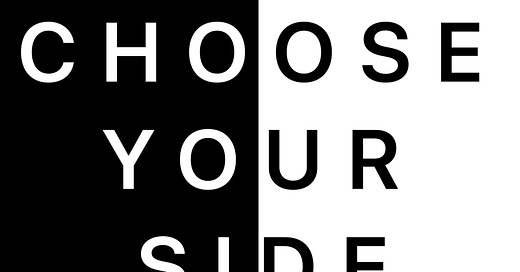WHY??????
My good friend and colleague Jana Echevarria, a longtime advocate for effective instruction for ELs (aka MLs aka EBs) in English-medium instruction—where virtually all find themselves— wrote a troubling post on her blog site. Jana has not only been an advocate for English Learners, but also of finding consensus among “reading wars” partisans.
Jana tells of presenting at a CABE (California Association of Bilingual Education) conference, when a meeting participant came up to her after her presentation.
I won’t spoil the ending, but I encourage you to read the post and ask yourself, as Jana does, Why do educators feel like they need to choose a “side”? Doesn’t it better serve everyone—particularly the students—to build consensus around what research clearly supports. Assuming, of course, you think “research” has a role to play in these discussions… and tbh again… I wonder if we actually agree on this?
In any case, consensus can exist, but it won’t happen by itself. IT MUST BE CONSTRUCTED.
As Jana says, if you’d like to join a community that seeks to build consensus between what we’ve learned from reading research and how it can promote literacy achievement among ELs (EBs, MLs), please register here. We would so welcome your participation and contributions.
Sadly, too may of our EL/EB/ML colleagues have opted out. I’ve not been able to figure out why exactly. But such is the state of our polarized society and politics.
We must ask: Is there something they are afraid of? What’s the real agenda? Who benefits?
Not the students, certainly.





I’ve been sitting with this too. Why do educators feel like they have to choose a “side”? I think there are a few things at play:
The path from research to practice is messy. What the research actually says often gets diluted or distorted by the time it reaches a classroom. For example, the Science of Reading doesn’t say “only phonics,” but in practice, a teacher might be handed a 45-minute phonics block with little context or conversation—and kids end up in decodables for too long. That’s not about research; that’s about how it's implemented.
At times, adults defend what they’ve always done—or the kids they most identify with. It’s easier to get stuck defending a specific practice (like independent reading) or one group of students, rather than thinking system-wide. Yes, a kindergartener just learning to read shouldn’t spend most of the day in independent reading. But a fifth grader who’s fluent? They absolutely need time to read. The nuance matters.
Choosing a “side” generates drama—which social media rewards. The algorithms love conflict. But in real classrooms, kids don’t benefit from sides—they benefit from thoughtful teaching, flexibility, and educators who are curious, not defensive.
At the end of the day, we help kids most when we stay open, stay grounded in dialogue, and stay focused on all learners—not just the ones who match our favorite example.
I saw Dr. Echevarria’s presentation at CABE in ‘24, btw, and it was excellent. Much more to say about this post later.